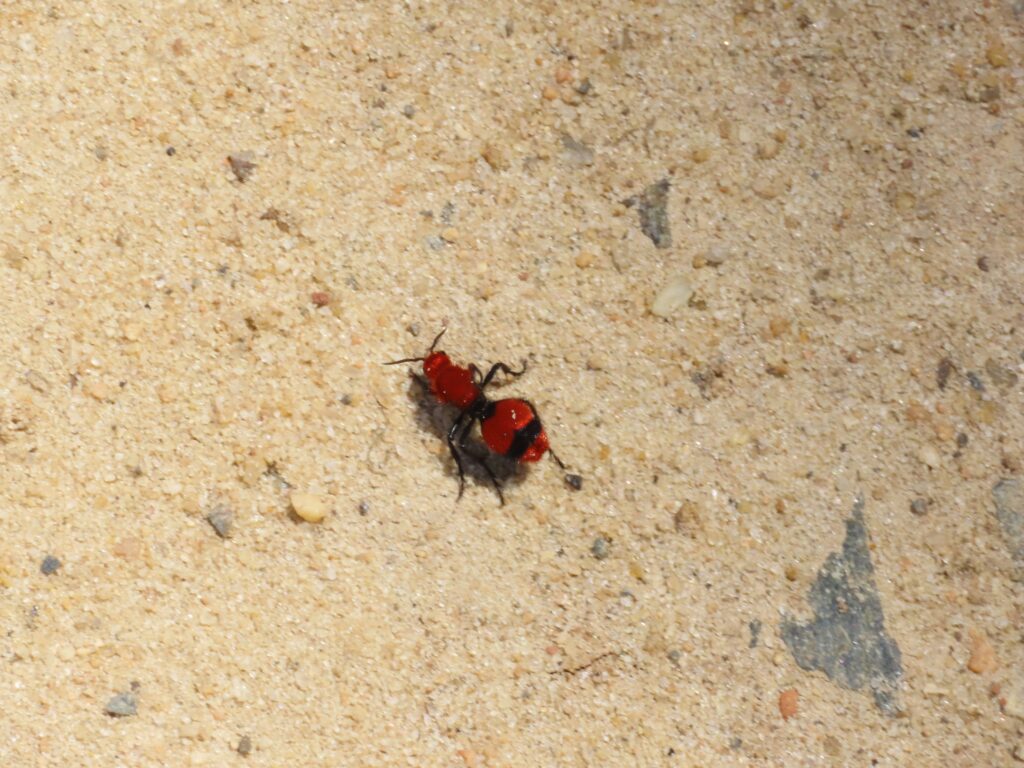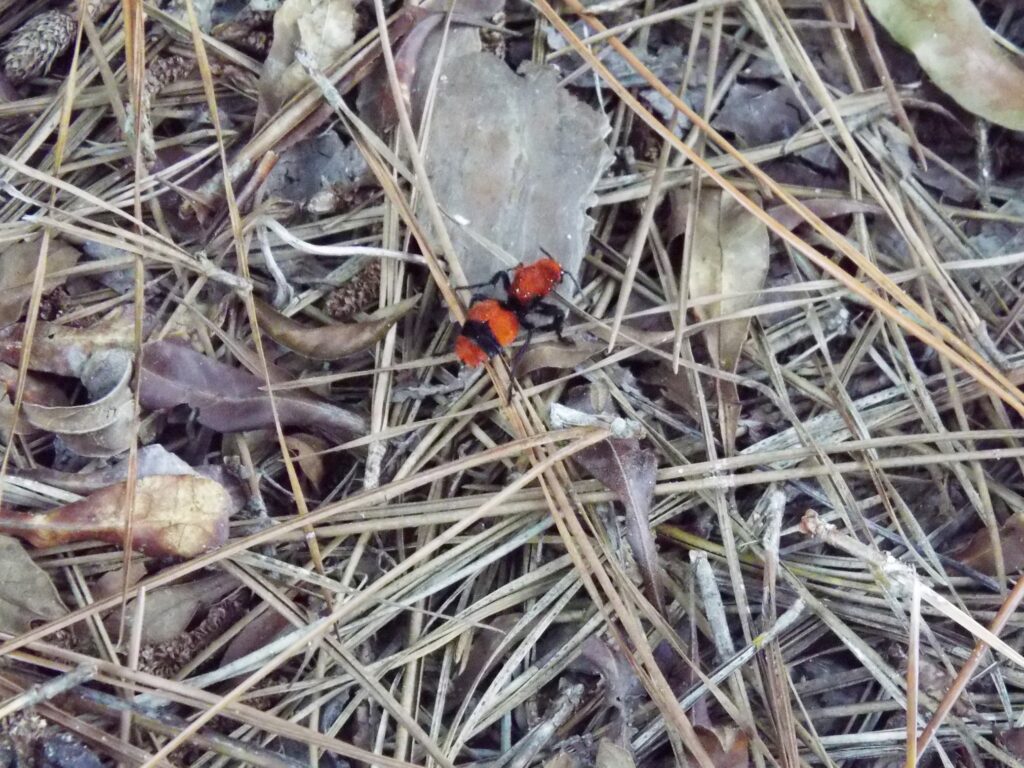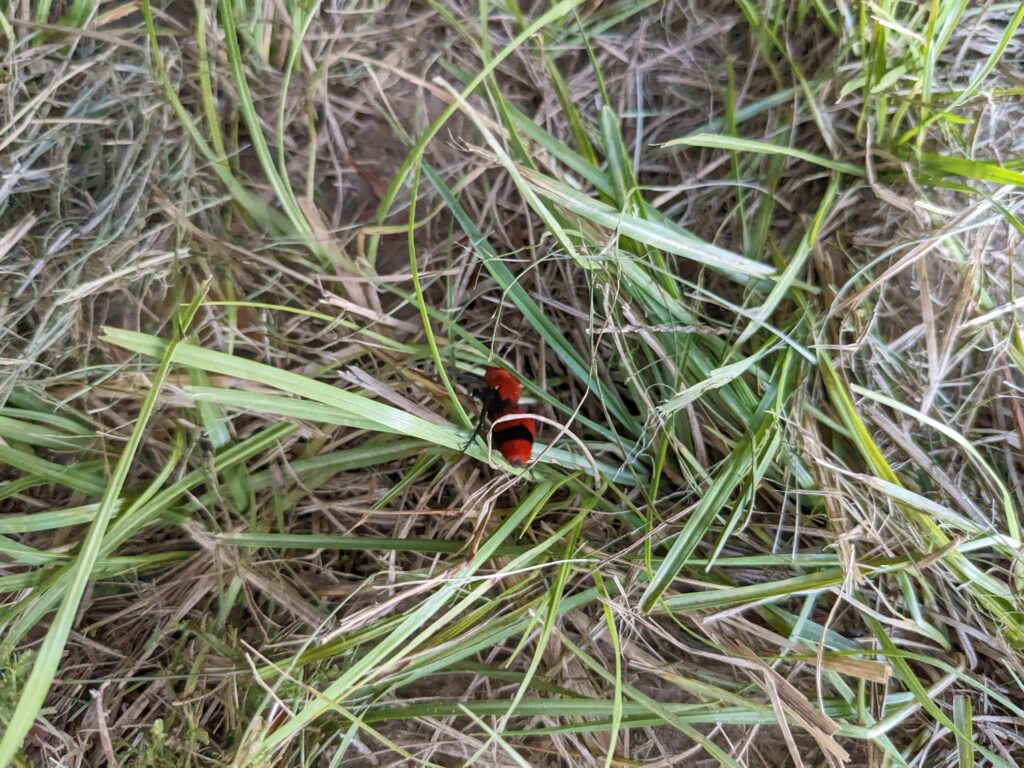




This week for Flora and Fauna Friday it’s the bull’s ire, the bloodshot one-shot bug, the Cow-Killer (Dasymutilla occidentalis).
The Eastern Velvet Ant, colloquially called the Cow-Killer, is found throughout the South including all of South Carolina. Cow-Killers grow to about three-quarters of an inch in length and both sexes are equally large. They sport an unmistakable coat of shiny blood-red and jet-black velvety hair. Hence the common name of “Velvet Ant”. Females are almost entirely red up top, except for black legs and a black base to and band across their abdomen. Males have a red head, red mantle on the thorax, and red tip to the abdomen with black everywhere else.
Cow-Killers are an interesting insect with many fascinating characteristics. Firstly, despite looking like giant ants, they’re really wasps. This jives better with their solitary nature and jittery movements. Females are wingless, scurrying swiftly through the grass as they search for flowers to drink from and insect tunnels to trespass in. Males have smoky-black wings and spend their time pollinating as they search for females. Often amidst courtship, male Cow-Killers will pick up their lady and carry her to a more secluded, and assumedly romantic, spot before mating. This helps explain why males are the same size as females, an odd trait for solitary wasps, since he needs to be able to fly for two. After mating comes egg laying and Cow-Killers are parasitic wasps. Females lay their eggs in the nests of other wasps, generally large-bodied ground nesting wasps, such as the Eastern Cicada Killer (Sphecius speciosus). Within the nest the Cow-Killer egg hatches and its larva will feed on its unsuspecting roommate, killing it and commandeering the nest.
Eastern Velvet Ants get the unique “cow killer” common name from their venom. The sting of a Cow-Killer is blindingly painful and although not potent enough to kill a cow, nor really any mammal, it certainly feels like it! That’s a fact they advertise far and wide with their bold color pattern. Contrasting patterns of red and black are the universal caution sign of the animal kingdom. This is called aposematic coloration. It’s a signal to predators to “woah-up!” and think before they act. The female Cow-Killer amplifies this effect to the next level, practically embodying a neon skull and crossbones. Her fuzzy fluorescent self exaggerates this coloration as she darts and vibrates across the ground in broad daylight, making her unmissable by anything with eyes. This violent, vibrant, vibrating is intended to trigger a deep-seated danger response in your brain and subsequently get you to steer clear and resist the intrusive thought to grab the aggressively twitching red bug.
In addition to their malevolent aura, they also scream. When handled or harassed, both males and females will rub their abdomen segments together, a process called stridulation, to make a rapid high-pitched squeaking noise to further elevate their warning signal. If that doesn’t work, they’re also heavily armored. The exoskeleton of the Cow-Killer is thick and tight-fitting, like a medieval suit of plate armor. So even if an oblivious or emboldened creature does get a hold of them, they’re far more durable than they appear. This will ideally buy the Cow-Killer enough time to angrily shriek and sting their attacker in the face, in the hopes they get dropped and can live another day.